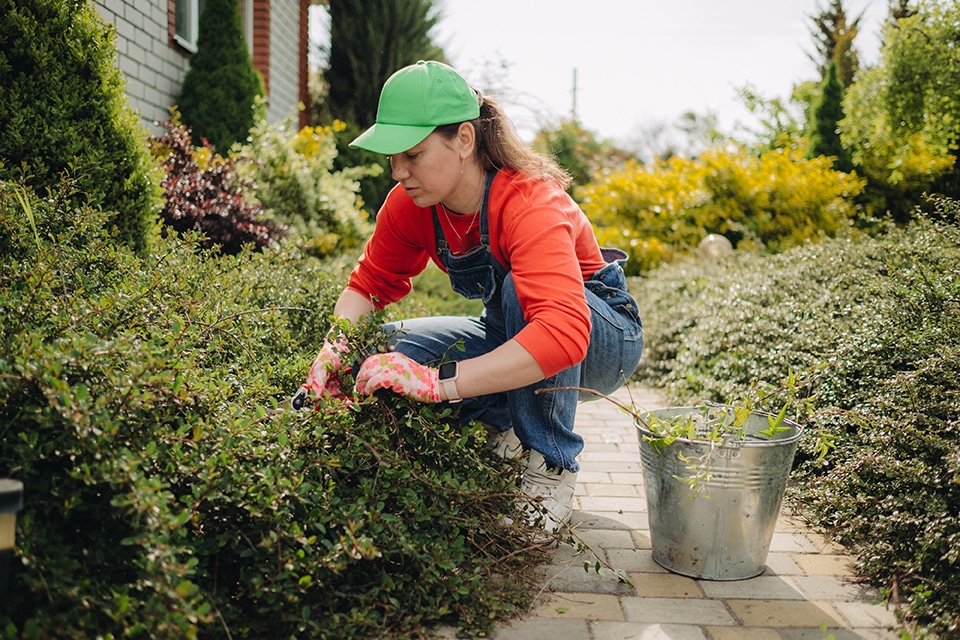Prevent Next Year's Itch: How to Remove Poison Ivy from Your Yard
Poison ivy is a persistent and troublesome plant that can cause rashes and discomfort long after the growing season ends. If you have poison ivy in your yard, removing it before it spreads can save you from next year's itch. Fall is the perfect time to start removing poison ivy from your yard—before the leaves fall and the plants become more challenging to identify. By eradicating the plants now, you can reduce the risk of a new crop popping up next spring. Discover how to remove poison ivy from your yard safely and effectively, along with tips on using Tecnu Detox Wipes or Tecnu Original to clean up afterward.
Why Remove Poison Ivy in the Fall?
As the growing season winds down, poison ivy plants prepare for dormancy, making them easier to deal with before winter. In the fall, the leaves are still visible, which is essential because removing poison ivy from your yard becomes much more difficult once the leaves drop.

The leaves are the easiest way to identify the plant, especially since poison ivy can blend in with other foliage.
By addressing the problem now, you'll not only prevent the plants from coming back in the spring, but you'll also reduce the chance of the urushiol oil—found in poison ivy—that causes rashes spreading around your yard during future activities.
How to Identify Poison Ivy
Before you can remove poison ivy, you need to identify it. The old saying "leaves of three, let them be" is a helpful starting point. Poison ivy usually has three pointed leaflets, but the plant can vary in appearance depending on its environment. The leaves may be green in spring and summer, turning red or orange in the fall. The plant can grow as a shrub, vine, or ground cover, making it adaptable and often challenging to spot.
When attempting to identify or remove the plant, wear protective clothing, including gloves, long sleeves, and pants. Even when the leaves are gone, the urushiol oil remains in the stems and roots, so mishandling it can still result in a rash.
How to Remove Poison Ivy from Your Yard
Here's a step-by-step guide on how to remove poison ivy from your yard:
- Wear Proper Protective Gear: Since urushiol oil can be present on all plant parts (leaves, stems, roots), wear gloves, long sleeves, and long pants. Ensure your skin is fully covered to avoid direct contact with the plant.
- Manually Remove the Plant: The most effective way to remove poison ivy is by digging it out from the roots. This method ensures that the plant won't grow back. Use a shovel or trowel to carefully remove the entire root system, which can extend deep into the soil.
- Dispose of the Plants Properly: Never burn poison ivy, as urushiol oil can become airborne and cause severe respiratory irritation. Place the plants in a plastic bag and dispose of them in the trash. Avoid composting poison ivy as it can contaminate the compost.
- Clean Up Thoroughly: After handling poison ivy, clean all tools, shoes, and gloves to prevent urushiol oil from spreading. Tecnu Original Outdoor Skin Cleanser removes urushiol from your skin, clothing, and gear. It's designed to break down the oil, preventing the rash from spreading to other body parts.
- Use Tecnu Detox Wipes for a Quick Cleanup: If you're looking for an easy, portable solution to clean up after working in the yard, Tecnu Detox Wipes are a great option. These wipes can be used on your skin, tools, and other surfaces that may have come into contact with poison ivy oil. They're perfect for quick, on-the-go cleanups to remove urushiol before it can cause a rash.
Preventing Future Poison Ivy Growth
After removing poison ivy from your yard, prevent it from returning. Poison ivy can be stubborn, and its roots may grow new even after you think you've removed the plant. Here's what you can do to prevent it from making a comeback:
- Monitor Your Yard: Keep an eye on where the poison ivy was removed. Check periodically for any new growth or seedlings that may have taken root.
- Apply Mulch: Mulching the area where the poison ivy grew can help smother any new growth by blocking sunlight and making it harder for seeds to germinate.
- Maintain Your Landscape: Regular yard maintenance, including mowing and trimming, can help keep poison ivy under control and less likely to spread.
Cleaning Up After Poison Ivy Removal
Even after you've removed poison ivy from your yard, it's essential to clean everything thoroughly. If not properly washed off, urushiol oil can linger on your skin, clothing, and tools for months. Using Tecnu Original is one of the most effective ways to ensure that all traces of the oil are gone. It works not just on your skin but also on tools, shoes, and other gear that may have come into contact with poison ivy.
Tecnu Detox Wipes are an excellent option for a faster, more convenient solution. They allow you to quickly wipe down your skin and surfaces, removing urushiol oil and preventing a potential rash.
Taking the time to remove poison ivy from your yard in the fall can save you a lot of trouble next spring. By eradicating the plant before it loses its leaves and becomes hard to identify, you can prevent it from spreading and reduce the likelihood of it returning. Remember to clean up thoroughly after handling the plant with products like Tecnu Original or Tecnu Detox Wipes to remove urushiol oil completely. With the right tools and knowledge, you can enjoy a poison ivy-free yard and avoid the dreaded itch next year.




